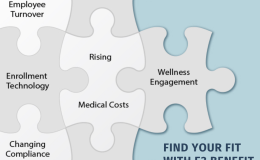For many business owners, big and small, choosing what healthcare benefits to offer their employees is a critical decision. It affects their ability to recruit quality employees and retain top employers. It is generally the top-listed concern that jobseekers express behind salary. That makes it crucial for employers to examine all options. For many, gap plans are a good way to supplement traditional plans and attract candidates.
What Is the Gap?
The “gap” that gap plans are designed to fill are expenses that may not be covered by a company’s traditional insurance plan. It is essentially an additional layer of insurance that works as a way for employees to receive reimbursement for medical expenses.
How Can I Tell if it’s Right for My Business?
Gap plans are very popular with businesses that have had to scale back their benefit offerings to employees. “Bridging the gap” saves the company money, but still shows job seekers that many of their medical needs will be taken care of. The most important way for businesses to evaluate whether gap plans will work is to see how well they complement the company’s existing traditional healthcare plan. Gap plans are not uniform; coverage can vary drastically. Inpatient and outpatient visits are usually covered, but sometimes deductibles are not. A good gap plan will work in concert with the healthcare benefits package to cover the most common medical expenses.
How Can I Compare and Select Plans?
The most methodical way to size up gap plans is to read the fine print. Understand what exactly is covered and what is not. See where your traditional plan is missing pieces and try to find a gap plan that can fill in the blanks. Likewise, paying to one that covers the same items is redundant and can be a waste of money.







Leave a Comment
You must be logged in to post a comment.